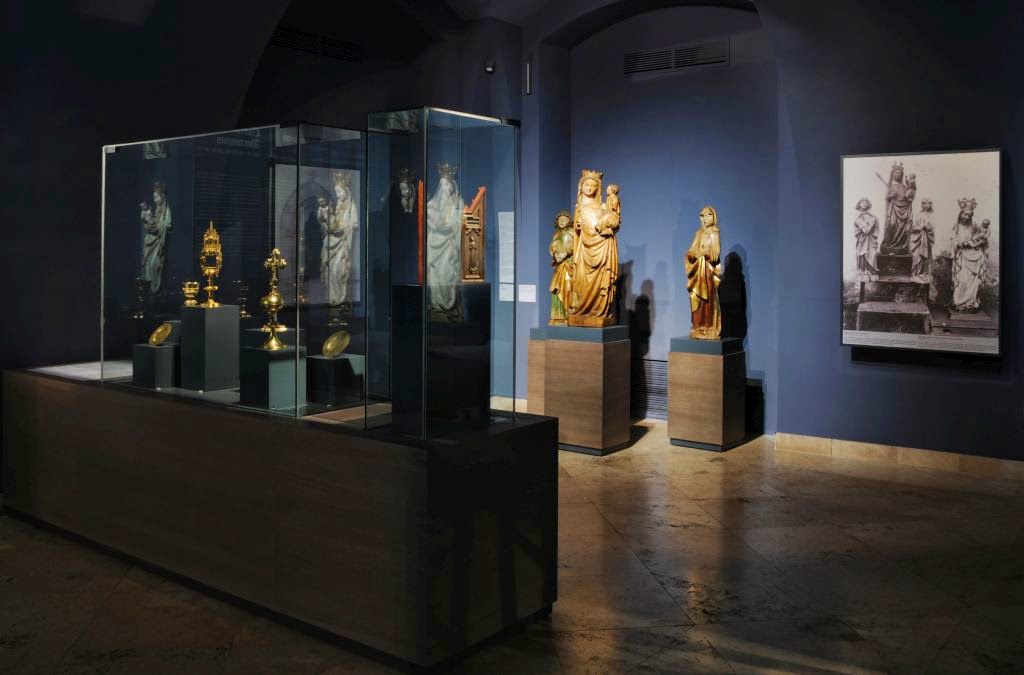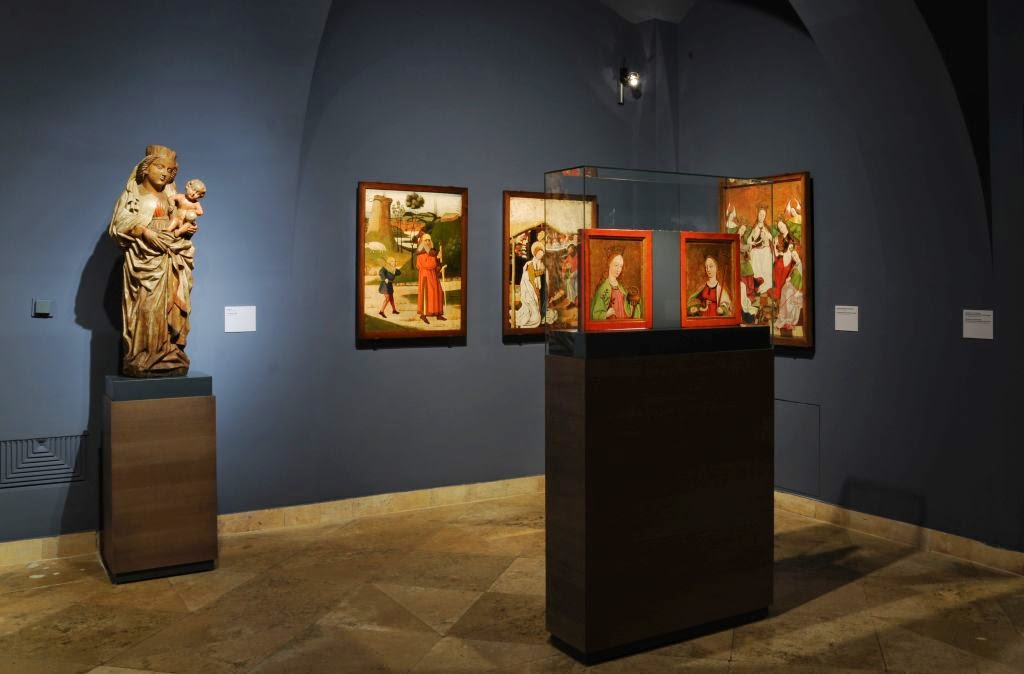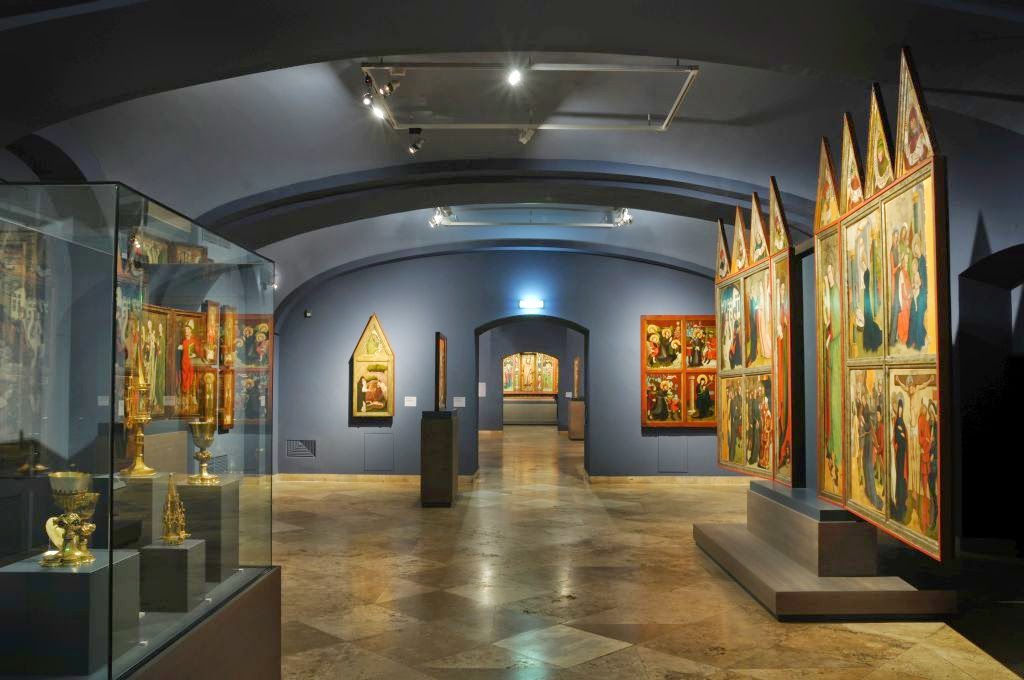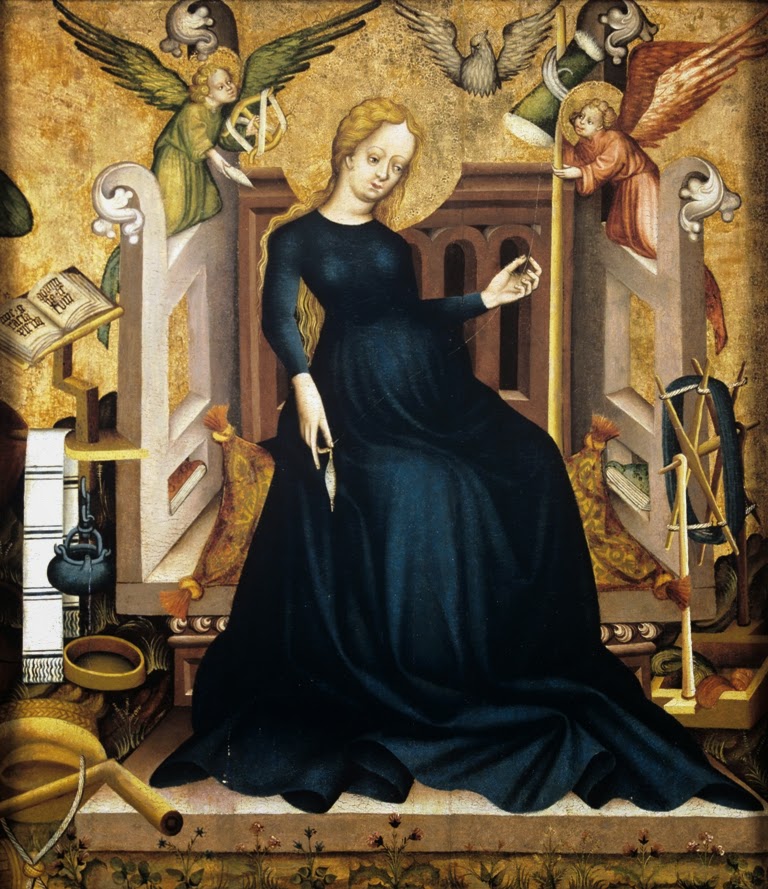Medieval History
Here are some images of the new exhibition, provided by the Hungarian National Gallery.



- Permanent Exhibition Of 9-10th Hungary Opens At Hungarian National Museum
Dress ornament from Zalavár (Photo: Hungarian National Museum)A new, long-missing section of the permanent archaeological and historical exhibition of the Hungarian National Museum opened yesterday. The exhibition - which is the continuation of the rooms...
- Medieval Stone Carvings Stolen From The Hungarian National Gallery
As it was revealead on Tuesday, two highly important Romanesque stone carvings had been stolen from the Hungarian National Gallery some time in early February. Both carvings were on view in the medieval lapidary of the Gallery, located on the ground floor...
- Medieval Holdings Of Budapest Museums
I often find myself trying to explain the system of Budapest's major art museums to foreigners. Although it is a clear system, it can still be confusing at times. For example, you can find important medieval artworks in all major museums of the capital....
- D'or Et De Feu
A new exhibition is coming to the Musée de Cluny (officially Musée national du Moyen Age) in Paris, titled "D'or et de feu" (Out of Gold and Fire - Art in Slovakia at the end of the Middle Ages), and opening on September 16th. The exhibition...
- Medieval Winged Altarpiece To Travel To London
After the London exhibition of the Liechtenstein collection was canceled, plans were quickly made to fill the void with an exhibition based on the holdings of Hungary's premiere art museum, the Museum of Fine Arts (Budapest). An article in the Guardian...
Medieval History
New medieval exhibition at the Hungarian National Gallery
 |
| Maria gravida, Vienna, 1409 see in high resolution |
I haven't had time to upload anything here for over a month - but a lot has happened in Hungary in the field of medieval art. I will try to catch up with a series of brief posts. First, I would like to report on the new medieval exhibition of the Hungarian National Gallery, which was completely reinstalled and opened at the end of September. This part of the permanent exhibition focuses on painting and sculpture from Hungary and neighboring areas in the 14th and 15th centuries. Some of the highlights of the collection can be seen here, including two statues of the Virgin of Child from Toporc, the two beautiful statues of female saints from Barka, or a painting originally showing the St. Joseph's Doubt (now cut down to only show the Virgin, see left). The exhibition was reinstalled to focus on the original liturgical context of these artworks, and therefore also includes a number of other liturgical objects - mainly goldsmith works on loan from the Hungarian National Museum. The new exhibition presents the material in a chronological-regional arrangement. The last section includes several complete altarpieces, thereby preparing the visitor for the next section of the permanent exhibition, where the monumental late Gothic altarpieces can be seen. That section has also been slightly rearranged recently, with the new installation of the main altar from Kisszeben.
The new exhibition, which provides a greatly improved space for the objects and a clear narrative for visitors, is definitely a must-see for anyone interested in medieval art. Organized by curator Györgyi Poszler, the exhibition also includes a number of works previously never shown, This was made possible by the continuous work of restorers during the last few decades. Readers familiar with Hungarian are encouraged to consult a new publication by the Hungarian National Gallery, which is dedicated to the most important restorations carried out between 1957-2011. The publication is available online from this link. In addition, you can see selected objects from this part of the collection on the website of the Hungarian National Gallery. The exhibition of Renaissance stone carvings (the area of which was unfortunately partially taken over by the museum shop) was also reinstalled - but the medieval stone carvings are still not on view (following the theft three years ago).
The new exhibition, which provides a greatly improved space for the objects and a clear narrative for visitors, is definitely a must-see for anyone interested in medieval art. Organized by curator Györgyi Poszler, the exhibition also includes a number of works previously never shown, This was made possible by the continuous work of restorers during the last few decades. Readers familiar with Hungarian are encouraged to consult a new publication by the Hungarian National Gallery, which is dedicated to the most important restorations carried out between 1957-2011. The publication is available online from this link. In addition, you can see selected objects from this part of the collection on the website of the Hungarian National Gallery. The exhibition of Renaissance stone carvings (the area of which was unfortunately partially taken over by the museum shop) was also reinstalled - but the medieval stone carvings are still not on view (following the theft three years ago).


- Permanent Exhibition Of 9-10th Hungary Opens At Hungarian National Museum
Dress ornament from Zalavár (Photo: Hungarian National Museum)A new, long-missing section of the permanent archaeological and historical exhibition of the Hungarian National Museum opened yesterday. The exhibition - which is the continuation of the rooms...
- Medieval Stone Carvings Stolen From The Hungarian National Gallery
As it was revealead on Tuesday, two highly important Romanesque stone carvings had been stolen from the Hungarian National Gallery some time in early February. Both carvings were on view in the medieval lapidary of the Gallery, located on the ground floor...
- Medieval Holdings Of Budapest Museums
I often find myself trying to explain the system of Budapest's major art museums to foreigners. Although it is a clear system, it can still be confusing at times. For example, you can find important medieval artworks in all major museums of the capital....
- D'or Et De Feu
A new exhibition is coming to the Musée de Cluny (officially Musée national du Moyen Age) in Paris, titled "D'or et de feu" (Out of Gold and Fire - Art in Slovakia at the end of the Middle Ages), and opening on September 16th. The exhibition...
- Medieval Winged Altarpiece To Travel To London
After the London exhibition of the Liechtenstein collection was canceled, plans were quickly made to fill the void with an exhibition based on the holdings of Hungary's premiere art museum, the Museum of Fine Arts (Budapest). An article in the Guardian...
